

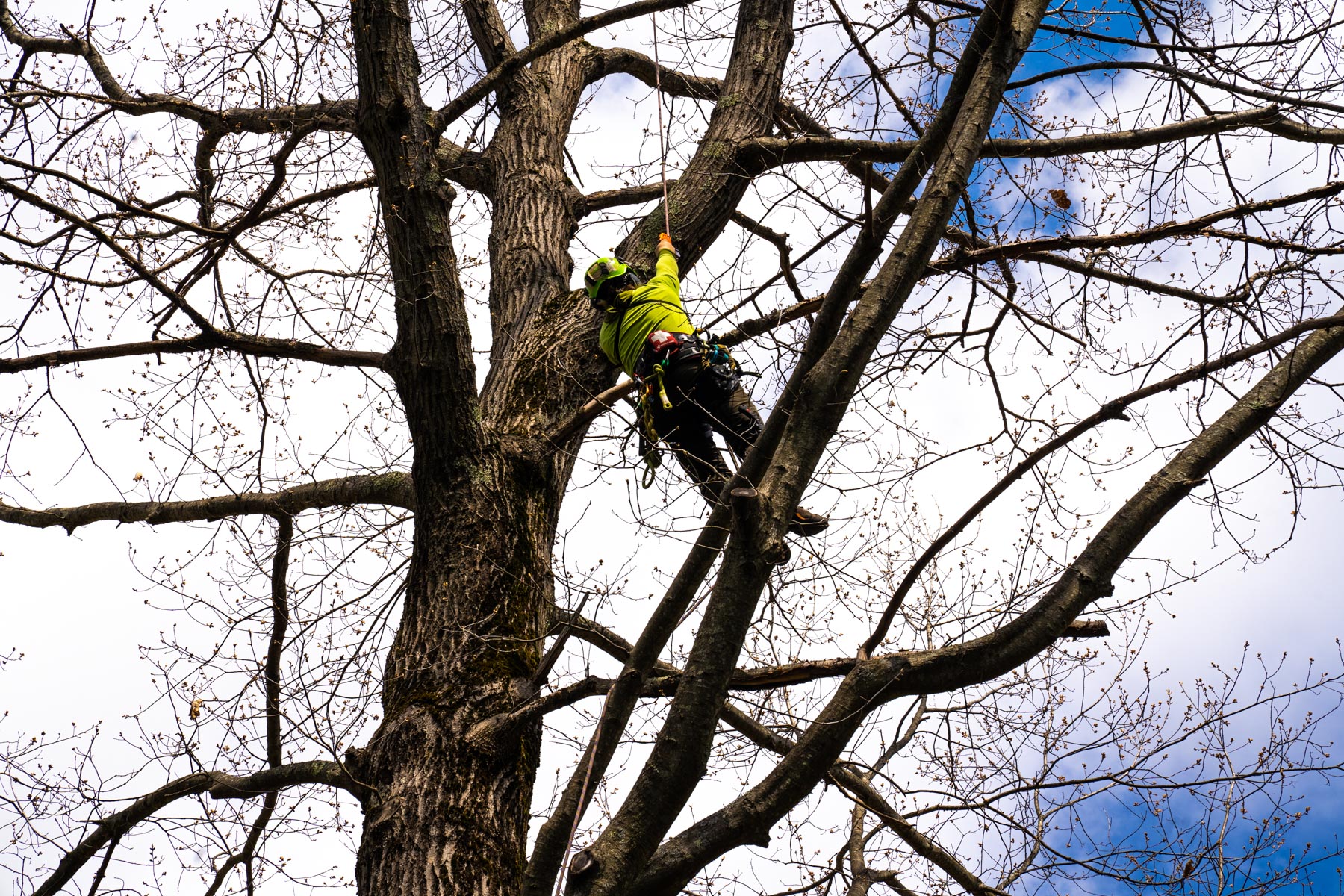
Your New England property’s trees are a valuable asset. You want to be able to enjoy them for many years to come, which is why their proper care is so critical.
While people sometimes underestimate the task of caring for their trees, without the right services, you could risk their loss.
One of those critical services is tree pruning. Proper tree pruning will help you preserve the health and longevity of these precious treasures.
We understand that knowing how and when to prune trees might not be in your wheelhouse. But in this tree pruning guide, we’ll cover all the important information that you need to know in order to get the most out of this valuable service.
Tree pruning is the process of removing specific branches in order to benefit the tree as a whole. It involves making strategic cuts to remove diseased, dead, or dying wood.
There’s often a lot more to tree pruning than people tend to realize. Knowing how and when to prune trees can make a difference in the results.
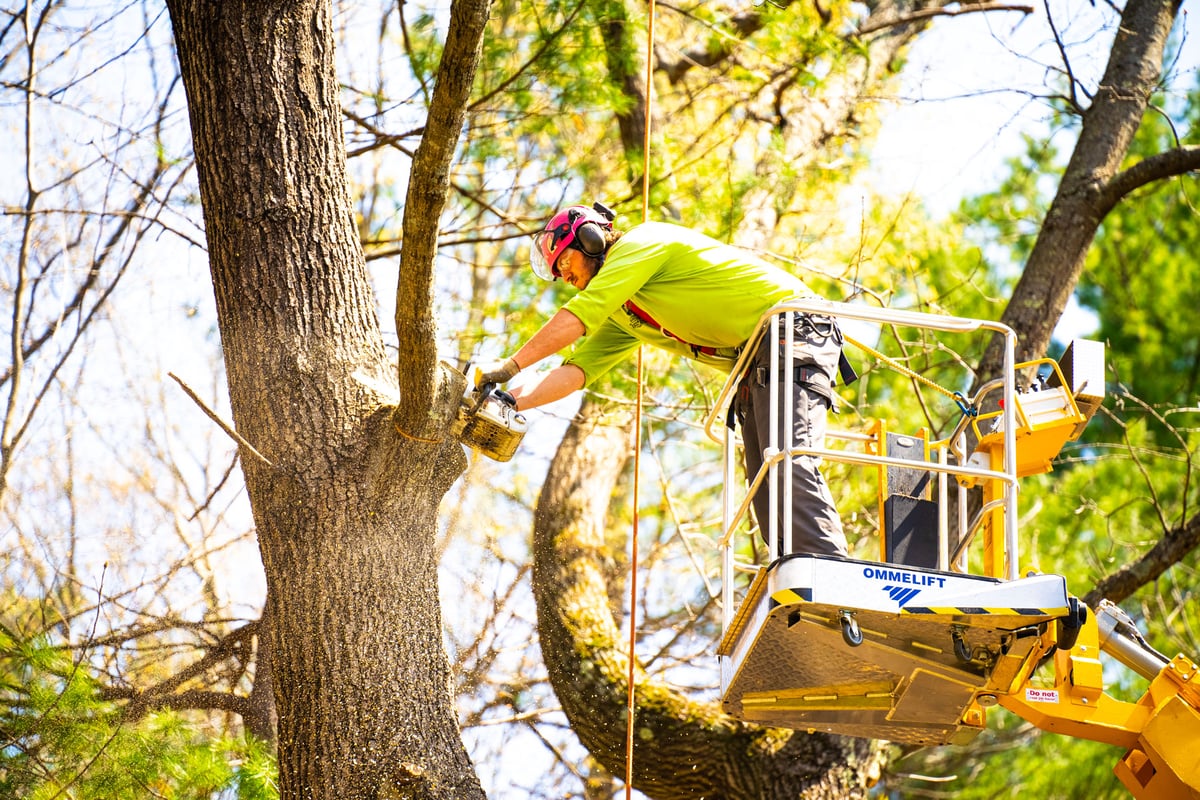
In fact, tree pruning can actually harm a tree if it’s not done properly. This is why this service must be performed correctly by a well-trained professional.
While it can be tempting to tackle DIY tree pruning, as this tree pruning guide will show, there are many reasons to leave this service in the hands of a pro.
To get the most out of this service, it’s really important that it’s done right. As you read through these tree pruning tips, you’ll have a much better idea of exactly what’s involved.
Most people have at least some sense of what tree pruning means. But we find that a lot of homeowners here in New England think it has entirely to do with aesthetics.
While it’s true that regular pruning will have an aesthetic benefit, it’s important to recognize that pruning also has a significant health benefit to trees.
One thing that often confuses this issue is the fact that the terms tree pruning and tree trimming are often used interchangeably even though they aren’t actually the same thing.
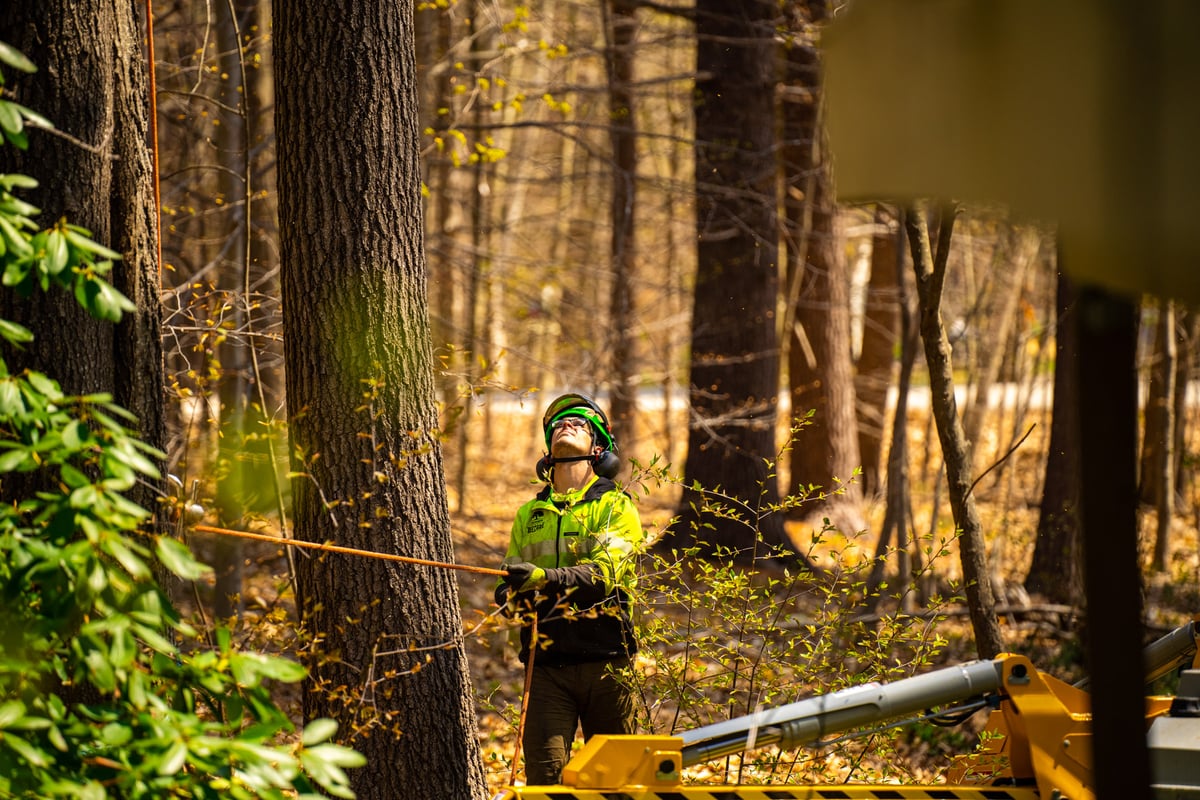
While tree trimming refers to the art of “shaping” hedges and shrubs to help control their size and tidy them up, tree pruning refers to what we mentioned above…the process of removing select branches to benefit the overall health of the tree. Tree pruning can also be used to maintain the proper size and shape of a tree but there’s more to it than just “cleaning things up.”
There are even different tree pruning techniques that can be used depending on what’s going on with your trees (as well as your goals for them). We’ll cover these in more depth a little further on but these include crown cleaning, crown thinning, crown raising, and crown reduction.
When your tree is properly pruned, you’re likely to notice an improvement in its health. Good tree pruning can lead to tree longevity and overall improved performance. But the key is that this service is done right.
Knowing when to prune trees is another important aspect of proper tree care.
It’s not uncommon for people to only really consider the springtime for pruning. This has more to do with the fact that people are spending more time outside than it does any sort of professional recommendation.
In fact, if you’re following a Northeast tree pruning schedule, the best time for New England tree pruning is actually the winter. This often surprises people as they aren’t thinking about their trees much in the winter. But you’ll see that winter tree pruning can have a few key benefits.
There are a few reasons why you might want to consider winter pruning.
For one, trees enter a dormant stage during the winter, where their growth halts. This lack of activity coupled with the fact that trees aren’t dealing with heat and drought, create ideal pruning conditions.
Even though pruning has a lot of benefits for trees, it’s also a stressor. Making cuts to the tree does put stress on it. But pruning during a tree’s dormant state minimizes that stress.
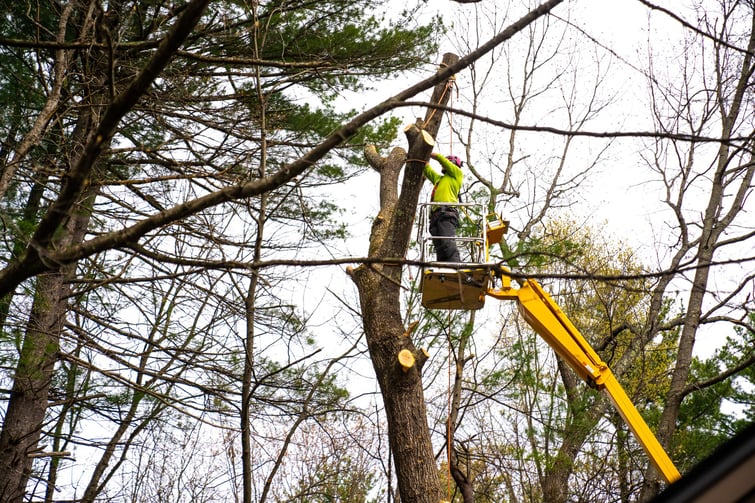
Another reason winter is the best time to prune a tree is that the lack of leaves on deciduous trees will expose the branches in a way that makes it easier to see problems, such as storm damage.
While winter is not the ONLY time to prune, it’s a great time for some of these reasons. We can prune trees throughout the year, but there are also reasons to be extra cautious in the summer (which we’ll cover next).
On the flipside, one of the toughest times to prune trees is in the summer. That’s because trees are already struggling with heat and drought conditions. Pruning can add to that stress.
Plus, if you remove some of the tree’s crown during the pruning process, leaves that aren’t used to sun exposure can get leaf burn.
Summer is also a common time for pest and disease activity and your tree could potentially already be struggling with a problem. Pruning is going to add more stress and provide a potential entryway for these issues to spread.
When it comes to how to prune a tree, keep in mind that the proper pruning tools will be needed.
There are a lot of different pruning tools out there and you can’t use the same tool on everything. In fact, some ornamental trees and shrubs will actually require highly selective hand pruning.
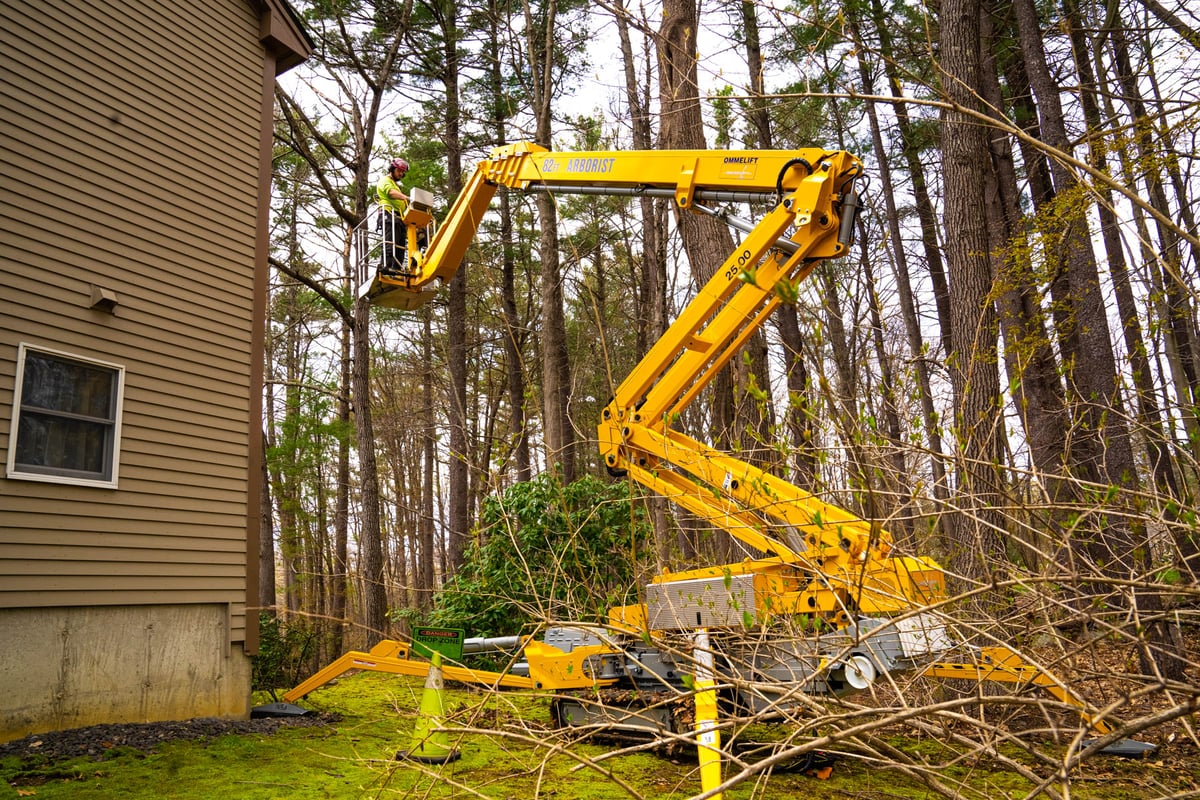
Having the right tool for the right cut you’re trying to make is key.
Here are some examples of some of the pruning tools needed in your tool kit.
A Looper can cut branches up to 2 ½ inches thick and is especially useful for pruning fruit trees, nut trees, and vines. This tool is similar to a pair of hand shears, but the blades are thicker, and the handle is much longer. Loppers also come in the anvil, bypass, and ratchet styles.
Pruning saws can cut branches between 2½ to 3 inches in diameter and are available in many styles. They have hard-pointed, heat-treated teeth and come in different sizes and shapes. Some varieties include bow saw, fixed handle saw, folding handle saw, curved blade pruning saw, and straight blade pruning saw. Use a pruning saw that matches the task at hand to make the job easier.
A pole pruner, with its built-in saw blade, can remove the deadwood in a tree. It can cut through branches up to 1¼ inch in diameter. Most pole pruners can reach up to 8 feet in height, eliminating the need for a ladder in many cases.
Older versions of pole saws had heavy wooden or fiberglass handles that flexed like fishing poles, making them difficult to control. In contrast, modern pole saws are quick-locking, lightweight, and rigid, often made of aluminum with oval or square cross-sections. Several pole saws like electric and battery pole saws, manual pole saws, and gas pole saws are available in the market.
It’s also important to mention that the condition of your pruning tools is critical to their success. You’ll need regularly sharpened blades that can make clean cuts. Jagged cuts or tears can put extra stress on the tree.
Pruning tools should be kept in good shape and cared for properly (including proper storage).
There’s also safety to keep in mind when using pruning tools. As we’ve mentioned before, DIY pruning can be a dangerous job and is therefore something that we advise against. But you do want to make sure that you’re working with a tree care professional who is using the proper pruning tools and using them correctly.
People don’t always realize that there are different tree pruning techniques that can be used depending on what your goal is for your trees as well as what’s already going on with them.
When you work with a tree care expert, you can ensure that the proper tree pruning techniques are being used on your property.
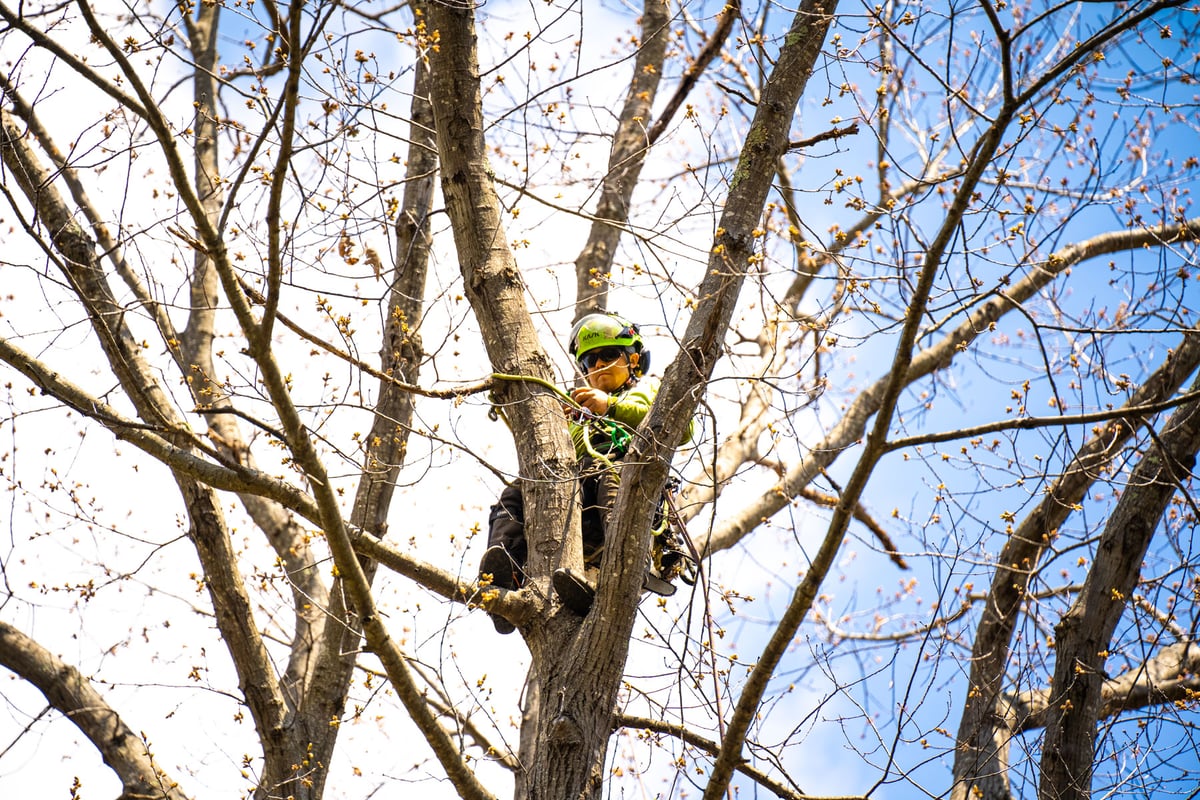
Here are four tree-pruning techniques that we commonly use.
As we’ve conveyed in this tree pruning guide, proper pruning is a vital step to help keep your trees healthy.
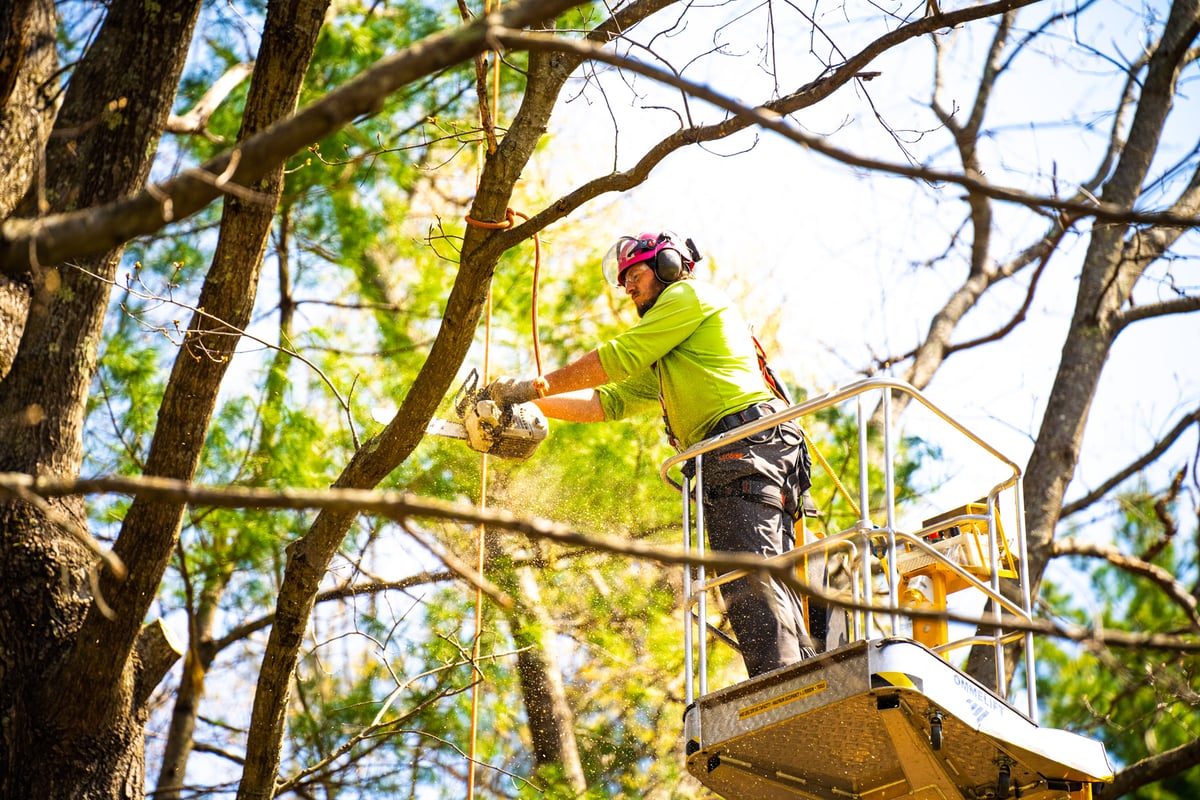
Here are some of the ways that proper pruning will keep your trees healthy in New England.
While there are certainly a lot of aesthetic benefits to this, you can also see how proper pruning will help keep your trees healthy. Since you want your trees to live as long as possible, you’ll want to make sure that you keep up with regular pruning.
There is a highly strategic way to prune trees that involves making the proper cuts. We like to say that good pruning is both an “art and a science.” This is why it’s so important to work with a skilled pro.

Even so, every year, people attempt DIY tree pruning and make some of these common tree pruning mistakes.
While these are common DIY mistakes, even “pros’ can make mistakes. This is why it’s so important to hire the right tree service company in New England. That’s because even just one bad pruning job can lead to a tree’s decline. While it may not die, it can negatively impact the development and structure of your tree.
You want to make sure that you are working with a well-trained company that is employing best practices. We’ll cover that point next.
There’s even an outdated pruning practice that we still see some tree pruning companies make. This is called “tree topping” and it’s a big mistake. If you’ve ever seen a tree lopped in half, this is tree topping.

When a tree is topped, it causes more harm than good by putting your tree at risk of decay, disease, and insect infestations. Tree topping is usually performed when people think a tree has gotten too large for their property. But this outdated practice can be very harmful to the tree. Ironically, tree topping also forces a tree to grow back faster and within two or three years, the tree might be back to its original size (if it survives).
That’s why a final tree pruning mistake we want to mention is hiring an inexperienced or out-of-date pro who makes pruning mistakes. This is a key reason why it’s important that you don’t shop on price alone. You want to make sure that you’re getting a pruning expert who is keeping up with best practices and training.
Don’t work with a pro who cuts corners. By paying a little bit more for pruning services, you can expect to get more out of your investment.
If you have trees on your property, then you’ll want to make sure you’re working with a tree care professional who can help you ensure they’re getting everything that they need.
When trees are not taken care of, they can actually become a liability. The last thing that you want is for your beloved trees to become a risk or pose problems.
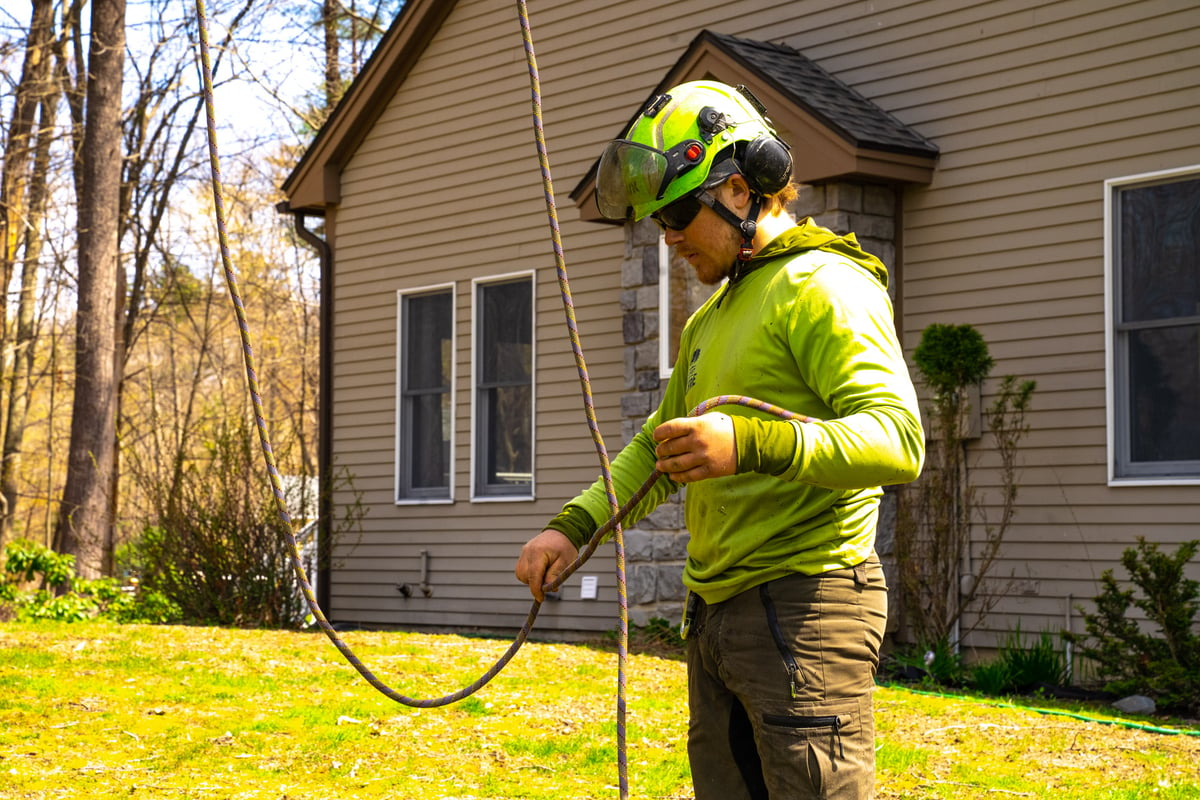
That’s why when you hire a professional tree pruning service, you’re actually taking an important step in protecting your investment. There are a lot of New England tree-pruning companies out there, so you’ll need to do your due diligence.
Your wise choice will go a long way in preserving your trees’ health and longevity.
While there are obviously plenty of companies offering this service, you want to choose the best tree care service out there. Here are some things to look for.
Working with a company that values extensive training is really important. You want to make sure that whoever is working on your property’s trees actually knows how to make the right cuts in a way that will benefit the health of the tree.
In addition to knowing exactly what cuts to make on your tree, a Certified Arborist will also be able to identify and diagnose potential tree problems. Trees can be subject to problems like diseases, pests, and more. It always helps to have an expert eye taking a good look at your trees.
There are plenty of companies out there that aim to be a “jack of all trades.” But you want to work with a tree pruning service that is heavily focused on this type of work.
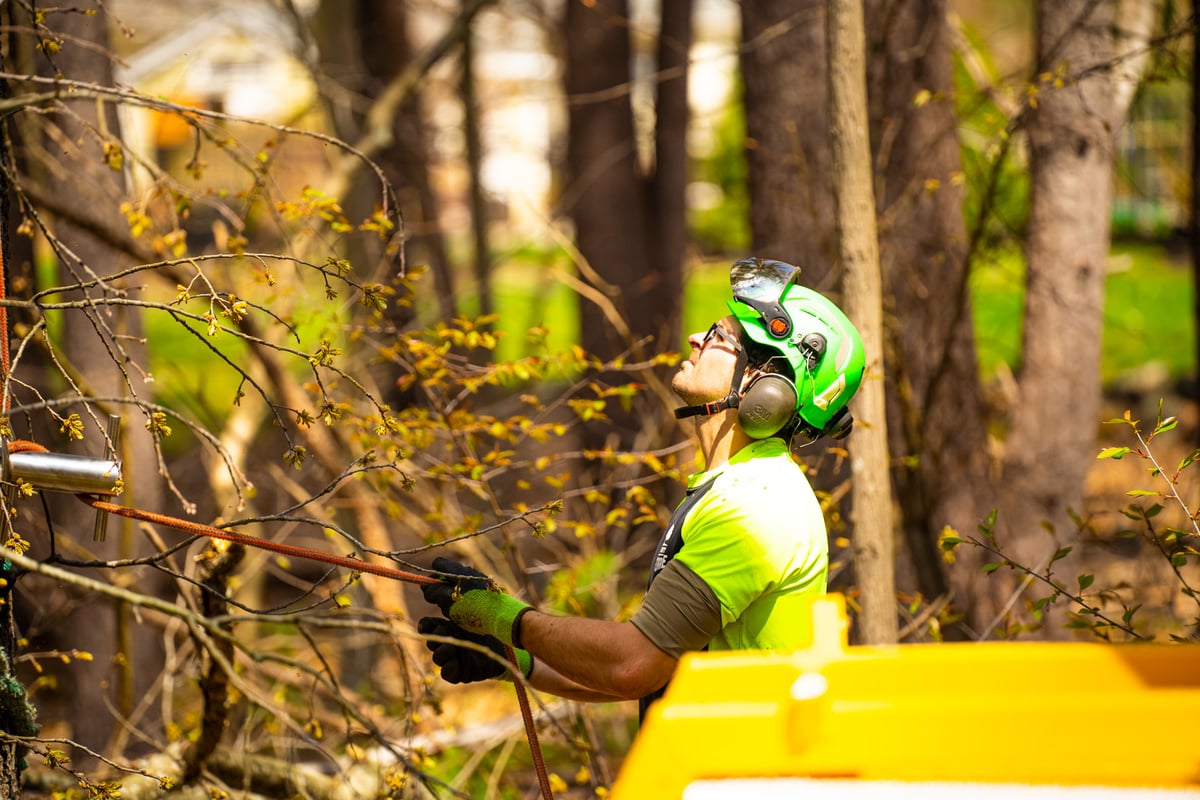
At Seacoast Tree Care, our focus is on trees (as our name implies!). We are experts in the field and we’ve been doing this for a long time. When we diversified into lawn care, we grew that business as a sister company that has its own turf experts.
Tree work, like pruning, can be risky. That’s why it’s really important to hire a tree pruning company that is properly insured. It’s important that any company doing tree work on your property has adequate liability insurance so that you are not liable if an accident were ever to occur.
Unfortunately, there are sometimes smaller companies that try to get into this line of work without the proper coverage. It’s important that you do your research when choosing a tree pruning service in Southern New Hampshire so that you don’t run into any trouble.
Hopefully, this tree pruning guide has provided some important tree pruning tips to keep in mind.
At the end of the day, it will be your wise choice in professional tree pruning services that make the biggest difference of all. That’s why you should also take time to research any companies that you’re considering by spending time on their website and even giving them a call to ask any remaining questions that you might have.
Ultimately, you want to find a company that has your best interest at heart and that you can build a long-term relationship with. Your property requires ongoing care and it’d be great to partner with a company that you truly trust.
At Seacoast Tree Care, we take the work that we do quite seriously. We started our business with the belief that we are here to care for and protect trees whenever we can. However, when they do have to come down, it’s absolutely critical that it’s done right.
We are committed to preserving trees in the New England area by performing vital services like tree pruning, the right way.
Ready for safer and healthier trees at your Southern NH, Maine, or Northeastern Massachusetts home? Request your consultation and get a free quote for tree pruning services. We service properties in and around Stratham, NH, Kittery, ME, and Haverhill, MA. By making a wise choice, you’ll know your trees are in good hands.